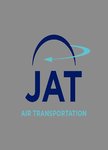版权所有:内蒙古大学图书馆 技术提供:维普资讯• 智图
内蒙古自治区呼和浩特市赛罕区大学西街235号 邮编: 010021

作者机构:Department of Mechanical Aerospace and Biomedical Engineering University of Tennessee AIAA KnoxvilleTN37996 United States
出 版 物:《Journal of Air Transportation》 (J. air transp.)
年 卷 期:2025年第33卷第1期
页 面:69-85页
核心收录:
摘 要:Electric vertical takeoff and landing technology has emerged as a promising solution to alleviate ground transportation congestion. However, the limited capacity of onboard batteries enforces hard time constraints for vehicle operations in a complex urban environment. Therefore, a constrained, real-time trajectory optimization method is necessary to enable safe and energy-efficient vehicle flight. Unfortunately, most existing trajectory optimization methods suffer from low computational efficiency, unpredictable convergence processes, and strong dependence on a good initial trajectory. In this paper, we employ a successive convex programming approach to solve the multiphase minimum-energy-cost electric vertical takeoff and landing vehicle trajectory optimization problem for urban air mobility applications. The main contribution is the development and validation of two novel convexification methods that find approximate optimal solutions to the multiphase nonlinear trajectory optimization problem in real time by solving a sequence of convex subproblems. Specifically, the first method transforms the original nonlinear problem into a sequence of second-order cone programming problems through a convenient change of variables and lossless convexification, while the second approach achieves a similar goal without the need for control convexification. The resulting convex subproblems can be solved reliably in real time by advanced interior point methods. The proposed methods are demonstrated through numerical simulations of two different urban air mobility scenarios and compared with the solution obtained from GPOPS-II, a state-of-the-art general-purpose optimal control solver. Our proposed sequential convex programming methods can obtain near-optimal solutions with faster computational speed than GPOPS-II. © 2024 by the American Institute of Aeronautics and Astronautics, Inc. All rights reserved.